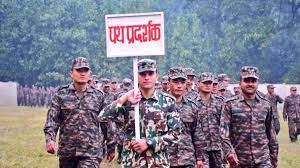Today Current Affairs: 17th December 2022 for UPSC IAS exams, State PSC exams, SSC CGL, State SSC, RRB, Railways, Banking Exam & IBPS, etc
Table of Contents
Red List Of Threatened Species : Update

White-cheeked Dancing Frog, Andaman Smoothhound shark and Yellow Himalayan Fritillary are among 29 new species assessed in India that are under threat, as per the IUCN Red List unveiled during the COP15 biodiversity conference in Montreal (Canada)
- The International Union for Conservation of Nature Red List of Threatened Species, also known as the IUCN Red List or Red Data Book, founded in 1964, is the world’s most comprehensive inventory of the global conservation status of biological species.
White-Cheeked Dancing Frog
- Status: Endangered
- It is Found only in the Western Ghats of Karnataka (endemic)
Andaman Smoothhound Shark
- Status: Vulnerable
- Only found in the Andaman Sea (Endemic to India)
- Threat: Fishing pressure
Yellow Himalayan Fritillary plant
- Status – Vulnerable
- It is a large group of mostly-spring flowering plants in the lily family and occurs mostly in the Himalayas. It occurs in Bhutan, China, India, Myanmar, Nepal and Pakistan.
- Threats – It is harvested and traded in disguise with a new trade name ‘Jangli lehsun’
Social Progress Index (SPI) 2022:

Economic Advisory Council to Prime Minister (EAC-PM) will release the Social Progress Index (SPI) for states and districts of India on December 20, 2022.
Social Progress Index (SPI):
- SPI is a comprehensive tool intended to be a holistic measure of the Social Progress made by the country at the national and sub-national levels.
- The report has been prepared by Institute for Competitiveness, headed by Dr Amit Kapoor and the Social Progress Imperative, headed by Michael Green.
- It was mandated by Economic Advisory Council to the Prime Minister of India.
- The report aims to provide a systematic account of the social progress made at all levels in the country with state and district-wise rankings and scorecards.
- The report also sheds light on the achievements of the districts that have performed well on the index and the role of the states in achieving social progress.
- A special section of the report provides an analysis of the Aspirational Districts of India, leading to a broader understanding of the social progress at the grassroots level.
- The report will act as a critical enabler and tool for policymakers in the coming years for achieving sustained socio-economic growth.
- SPI assesses the performance of states and districts on three dimensions of social progress: Basic Human Needs, Foundations of Wellbeing, and Opportunity. Within each dimension, there are four components.
- The dimension of Basic Human Needs assesses the performance of states and districts in terms of Nutrition and Basic Medical Care, Water and Sanitation, Personal Safety and Shelter.
- The dimension of Foundations of Wellbeing evaluates the progress made by the country across the components of Access to Basic Knowledge, Access to Information and Communication, Health and Wellness, and Environmental Quality.
- The dimension of Opportunity focuses on aspects of Personal Rights, Personal Freedom and Choice, Inclusiveness, and Access to Advanced Education.
Agni V : Test Trials

India has successfully conducted night trials of nuclear-capable ballistic missile Agni V.
- It is a surface-to-surface Nuclear Capable Ballistic missile.
- It can carry both nuclear and traditional weapons.
- Agni-V, with a range of over 5,000 km, is India’s longest-range ballistic missile and can reach most parts of China, making it the mainstay of India’s triad to deliver nuclear weapons.
- It is a 17-meter long missile with two-meter diameter
- It has been indigenously developed by Defence Research and Development Organisation (DRDO).
- Agni-V is the most advanced missile in the Agni series featuring many new technologies, including the very high accuracy Ring Laser Gyro based Inertial Navigation System (RINS) and Micro Navigation System (MINS) which improves the accuracy of the missile.
- With the Agni-V, India joins an elite club of countries like US, Russia, the UK, France and China, which boast Inter-Continental Ballistic Missile (ICBM) capabilities.
5th Edition Of Youth Co:Lab:

The 5th edition of Youth Co:Lab was launched on December 15th 2022
- Youth Co:Lab is an initiative launched in 2019 by UNDP India in partnership with Atal Innovation Mission, NITI Aayog.
- Youth Co:Lab was co-created in 2017 by UNDP and the Citi Foundation, Youth Co:Lab.
- It is a multi-dimensional and multi-level response to tackle the challenges young people face by positioning youth at the forefront in finding solutions to global challenges tackling Sustainable Development Goals (SDGs).
- It aims to establish a common agenda for Asia-Pacific countries to invest in and empower youth to accelerate implementation of the Sustainable Development Goals (SDGs) through leadership, social innovation, and entrepreneurship.
- The Youth Co:Lab initiative, till date, has been implemented in 28 countries and territories, reaching over 200,000 participants, benefitting more than 11,000 young social entrepreneurs and supporting over 1,240 social enterprises.
- Through Youth Co: Lab, 30 early-stage start-ups would be supported by the springboard programme, and the best would be provided a seed grant for scaling up their start-up.
- The 5 focus thematic areas for Youth Co: lab 2022-23 are:
- Digital and Financial Literacy for Youth
- Gender Equality and Women Economic Empowerment
- Developing FinTech Solutions focused on Biodiversity Conservation
- Promoting Biodiversity-friendly Lifestyles through Technological Solutions in Finance
- Accelerating Circular Economy through Upcycling Innovations
- Behavioural Nudges for LiFE ( Lifestyle For Environment)
7th Edition Of India Water Impact Summit:

Union Minister for Jal Shakti recently inaugurated the 7th Edition of India Water Impact Summit.
- The Summit aims at giving an insight into the potential causes for divergence and formulating strategy to achieve convergence.
- It is organised by NITI Aayog at Dr Ambedkar International Centre (DAIC), 15 Janpath, New Delhi.
- Experts from the country and abroad are discussing ways to protect the small rivers in large river basins.
- Theme: ‘Restoration and Conservation of Small Rivers in a Large Basin’ with emphasis on the select aspects of ‘Mapping and Convergence of 5Ps’ – People, Policy, Plan, Programme and Project.
- The summit will also host the “Finance Forum”, a special track that will bring together global financial institutions and investors interested in river restoration and conservation programmes.
- The 2022 summit, like earlier summits, will also provide an opportunity to dozens of technology and innovation companies from around the world that are keen to bring their solutions to India to address various issues and concerns pertinent to our river basins.
Exercise “SURYA KIRAN”2022:

The 16th Edition of exercise “SURYA KIRAN” will be conducted at Nepal Army Battle School, Saljhandi, and continue up to 29 December 2022.
- It is an Indo-Nepal joint army training exercise.
- It is conducted annually between India and Nepal with the aim to enhance inter-operability in jungle warfare and counter-terrorism operations in mountainous terrain and Humanitarian Assistance and Disaster Relief (HADR) under UN mandate.
- Nepal Army soldiers of Shree Bhawani Baksh Battalion and Indian Army soldiers from the 5 GR are participating in the exercise.
Methane Emissions:

A study has been published titled- “Wetland emission and atmospheric sink changes explain methane growth in 2020’, which states that low nitrogen oxide pollution and warming wetlands likely drove global methane emissions to record high levels in 2020.
Findings:
- Global methane emissions reached roughly 15 parts per billion (ppb) in 2020 from 9.9 ppb in 2019.
- In 2020, methane emissions from human activities decreased by 1.2 teragrams (Tg) per year.
- Methane emissions from oil and natural gas decreased by 3.1 Tg per year compared to 2019. Contributions from coal mining decreased by 1.3 Tg per year.
- Fire emissions, too, dropped by 6.5 Tg per year.
- Globally, fire emissions appear to have fallen in 2020 compared to 2019, the researchers wrote in the study.
- Contributions from the agricultural sector went up by 1.6 Tg per year.
- Wetland emissions rose by 6.0 Tg per year.
Gond Tribes And Hattee Community:

A motion has been initiated in Lok Sabha to include Hattee community of Sirmaur district’s Trans-Giri region in the Scheduled Tribes list of Himachal Pradesh. Also, a bill to move in the Gond community from SC to the ST list in four districts of UP has been approved by the Rajya Sabha.
- A motion is any proposal made for the purpose of eliciting a decision from the House.
- There can be different types of motions such as Cut motion, Call-attention motion etc.
- Gond is one of the largest tribal groups speaking the Gondi language (a Dravidian ethnolinguistic group).
- They are spread over several states- MP, Chhattisgarh, Maharashtra, etc. They are generally peasants and worship nature.
- Bhil are the largest Tribe in India (consisting of 38% of the ST population of India)
- Hattee community : The Hattis are a close-knit community that got their name from their tradition of selling homegrown vegetables, crops, meat, and wool, etc. at small markets called ‘haat’ in towns.
- The Hatti homeland straddles the Himachal-Uttarakhand border in the basin of the Giri and Tons rivers, both tributaries of the Yamuna.




